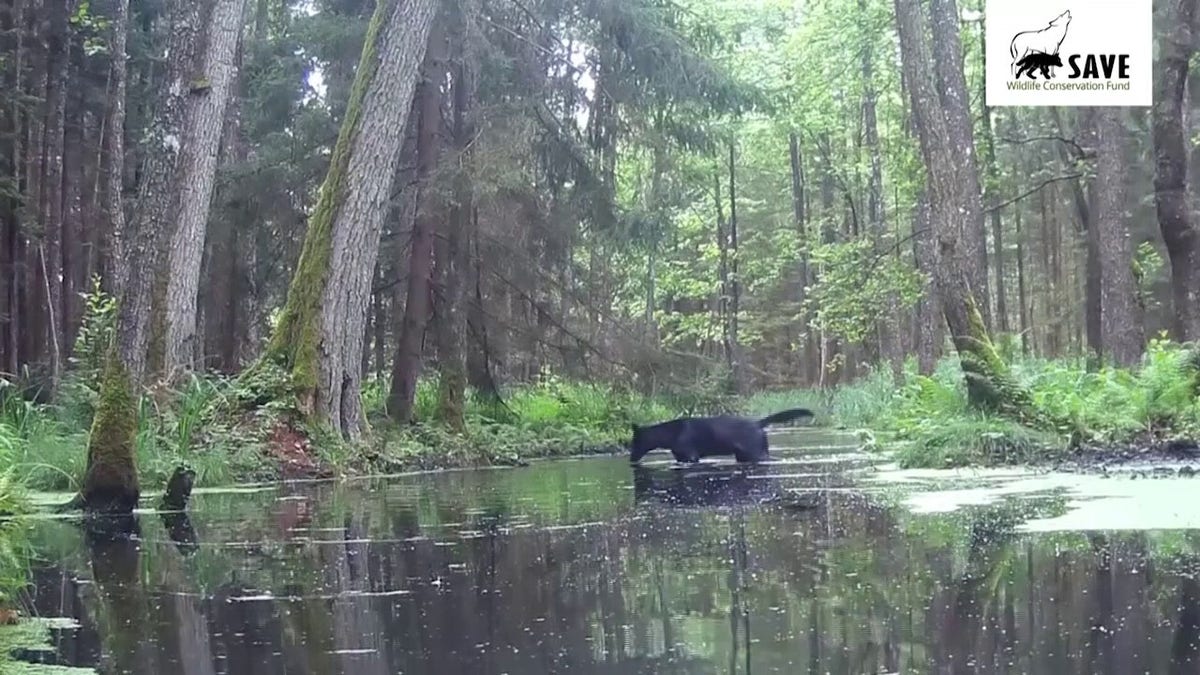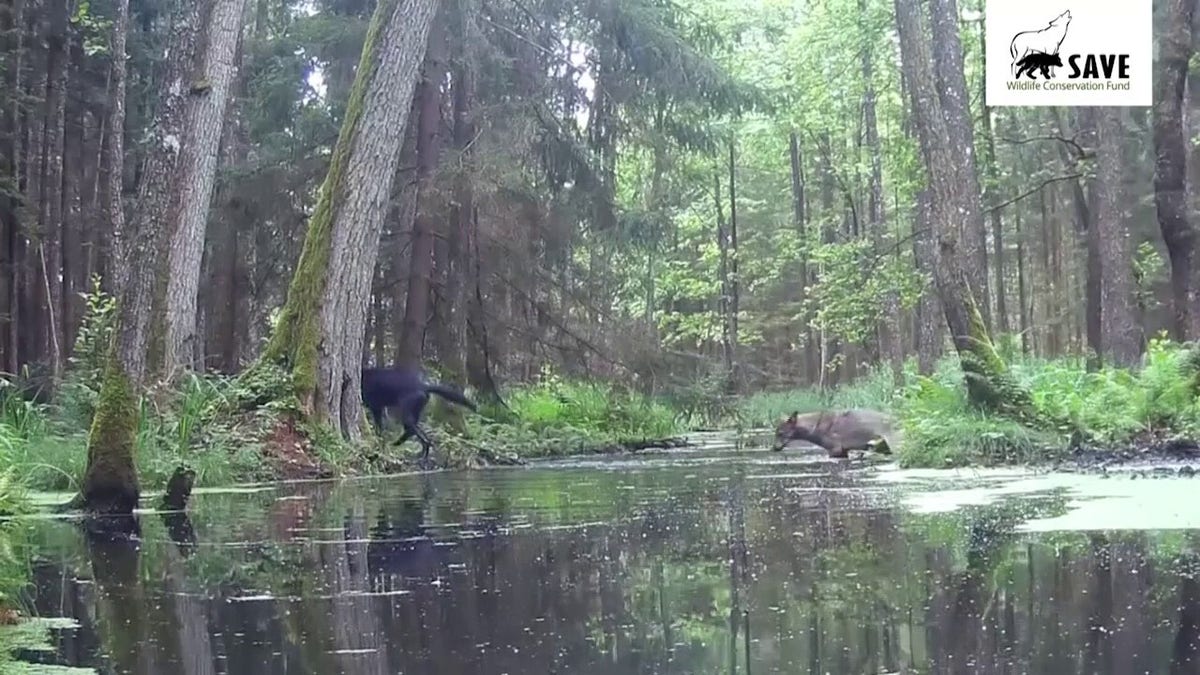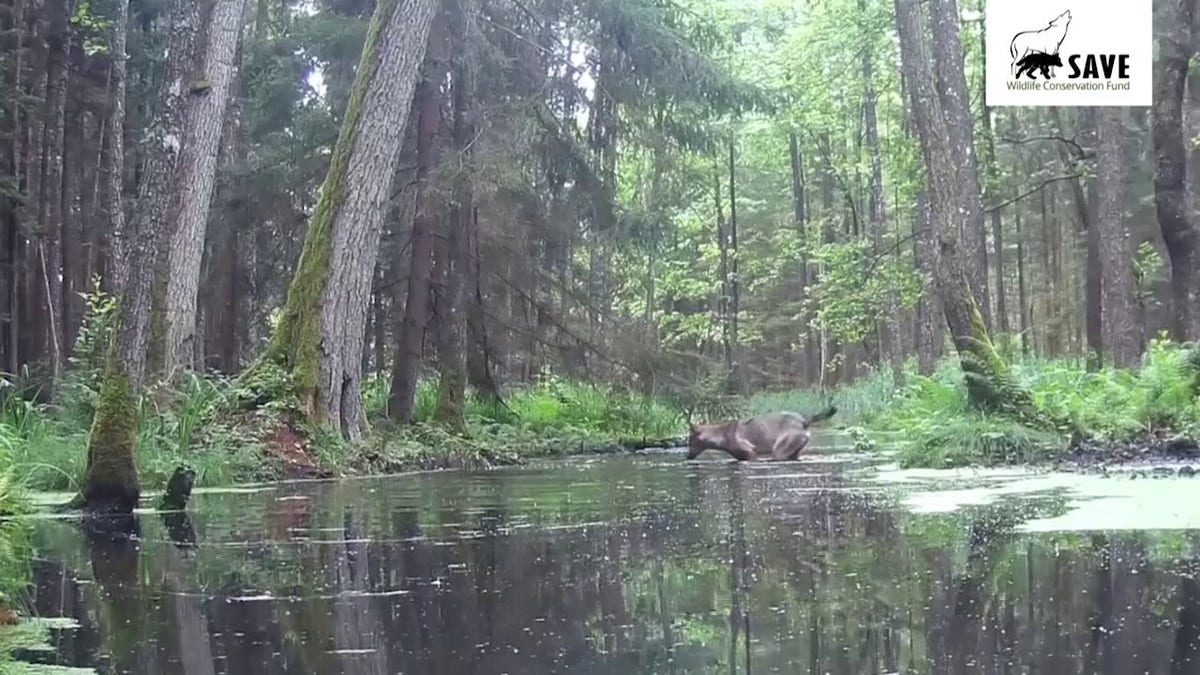A remarkable sighting of two black wolves, believed to be siblings, traversing a stream in a Polish forest has captured the attention of conservationists. The incident, recorded on video last year, has spurred the SAVE Wildlife Conservation Fund Poland to collect scat samples in the area to delve into the genetic makeup of these unusual canines.

The video footage, originally intended for beaver observation, was captured by project coordinator Joanna Toczydlowska. Astonished by the presence of the wolves, she opted to continue monitoring the area to gather further insights into their behavior and characteristics. Toczydlowska described the sighting as "new and unusual."
One clip showcases a gray wolf and a black wolf cautiously navigating the stream, the water level reaching almost to their bellies. Another clip, filmed in the fall, reveals two black wolves and a gray wolf crossing the same stream. To safeguard the wolves, the precise location of the sightings has been withheld.

In Poland, the vast majority of the nearly 3,000 wolves exhibit gray fur with red or black markings. The black coat color is likely attributed to a genetic mutation linked to domesticated dogs from thousands of years ago. While this dark fur is uncommon in Europe, it is prevalent in North America, notably in Yellowstone National Park where at least half the wolf population displays black fur.

Toczydlowska estimates the two black wolves to be approximately one year old, based on their size (around 66 pounds) and the tendency of wolves to travel in family units. She also identified at least one of the black wolves as male. Wolves in Poland faced near-extinction by the mid-20th century, but their numbers have since recovered, particularly in the central region. The SAVE Wildlife Conservation Fund plays a vital role in educating the public about coexisting with wolf packs, an increasingly important task given the expanding wolf population.








